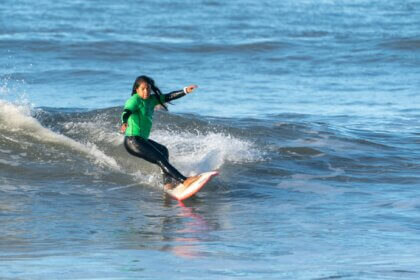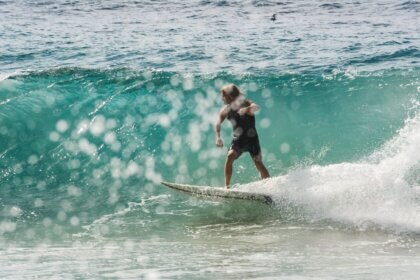Posted on February 25, 2020 by Sonoma Valley Sun
Aside from being one of the coolest activities that you can do, surfing is a soul-refreshing and enticing water sport that can get your heart pumping. But surfing communities aren’t always the most welcoming to beginners.
This doesn’t mean that it’s too late for you to pick up surfing; all you’ll need to do is get familiar with the technique and what to do before starting. If you are developing an interest in the sport here’s a brief guide to help you get on your board and start riding waves.

Find a Mentor
While anyone can tackle the challenges of surfing alone, it’s not really recommended. Surfing looks easy, but it’s far from being something that you can just learn in a few goes. You can easily find great surfing lessons and teachers with good reviews if you take your time to research. The best teachers are not only the ones who teach you the basics, but also the ones who light the fire of passion for surfing within you.
Big Boards and Leashes
While cool-looking boards are awesome, beginners shouldn’t focus on the aesthetic aspect more than the practical ones. Choose surfboards on the bigger side of the spectrum as they’re much easier to balance on, and more forgiving to mistakes. If you’d like a place to get your big boards and other gear from, you can get yourself started here and see a vast collection including everything you’ll need for surfing. Soft-top boards are recommended as well since they’ll be gentler on your legs and posterior whether you’re on-foot or sitting down. Always make sure to use a surfboard leash as it can make a lot of difference in terms of safety. It’s attached to your ankle and connected to your boar.
10 Strokes
Paddling to position yourself in the way of a wave is probably the most physical side of the surfing equation. It’s very important that you manage to catch some momentum before the wave carries your board, so you could get into a standing position easily. Use long and calm strokes while cupping your hand to avoid wasting energy. Try to at least use 10 strokes before the wave peak, while angling your board for the most balanced ride.
Know Your Abilities
Surfing has a lot of degrees of complexity and difficulty. Not knowing where your ability’s limits are can be dangerous to you and other surfers. There are many surfing spots that are perfect for beginners every season. You don’t want to disrupt other experienced surfer rides or even become a potential hazard to them.
Get a Rhythm
Beginners are usually the most excited to get into the water and this shows by how they aren’t able to pace themselves properly. No matter how excited you are, focus on maintaining a sustainable rhythm that doesn’t tire you out quickly while being efficient. Don’t let your ambition get the best of you and focus on mastering surfing on smaller waves before moving on to bigger ones. Your rhythm will help you avoid injury as you’ll be able to focus more on whatever waves you tackle.

Sitting and doing the Prone
It may look easy from the beach, but sitting on your surfboard in the water is actually harder than it looks. You’ll want to focus on stability by dipping your feet in the water while sitting to have more control over the surfboard. Once you manage to sit comfortably, you’ll want to learn how to be prone next. The prone position is very important to your wave-catching routine as it will help you gain a lot of the momentum required for surfing properly. You can practice the prone on dry land before testing it out in the waters to make sure you understand the main balance points and the feeling.
Learning how to surf is going to be one of the most enjoyable experiences in your life. The positive effects also include mental ones like relieving stress and character building.





Recent Comments